I am starting a new series of blog posts that will be come out the first week of each month. It is “Getting Started with a Year Round Garden”. Even though much of the things I will talk about will be applicable to any garden season there are definitely other things that will really help you if you plan on gardening through fall and winter.
And perhaps you already have a garden established but there will still be lots of information that can be applied to an existing garden. I have a tendency to think big and imagine an idealized garden even though there may not be such a thing in existence. That being said, I think it’s good to know what the ideal would look like so you can strive for it even when your garden is less than ideal. I think with enough determination anyone can make an amazing garden even out of the most unlikely garden site. We have had to deal with way less than ideal sites in 2 out of 3 of our gardens.

Building our Garden- February 2014
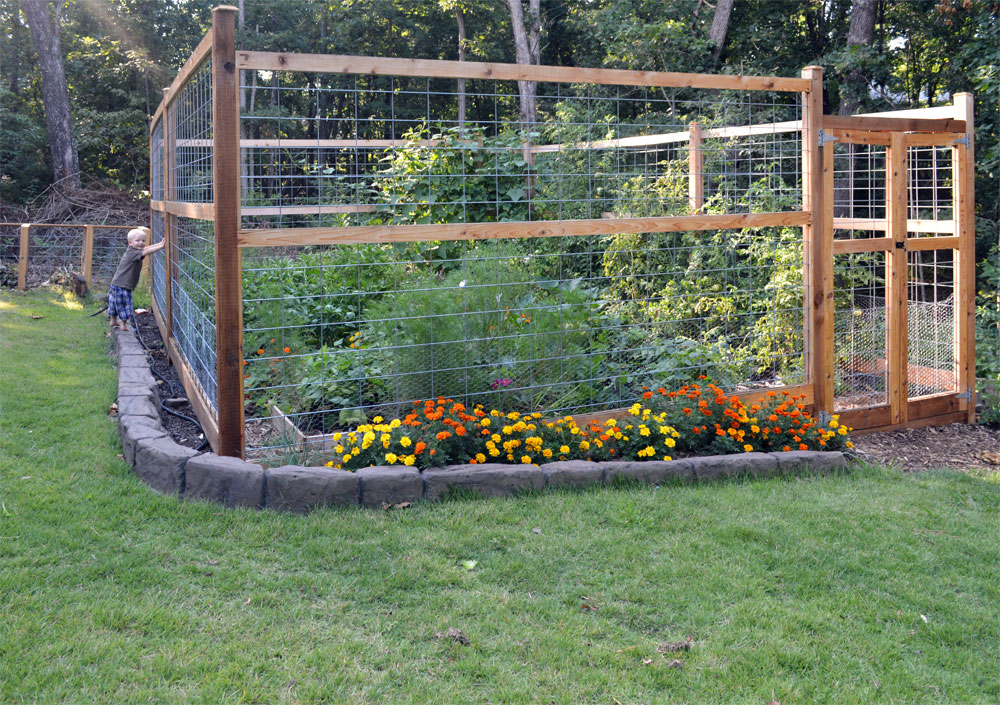
Finished Garden August 2014
To start off, the first thing I always consider when beginning a garden is location.
This is important to consider at the beginning because it is an important key to a successful and productive garden. Every property is so different that no garden can or should really look the same.
Your first considerations should be:
-
Sun
-
Water access
-
Drainage
-
Soil Quality
-
Proximity to your Home and Tool Shed
#1 Sun
In 95% of locations you want a full 8-12 hours of sun, the exception being of course desert places where too much sun could be detrimental.
This has always been a struggle of mine on our current property since we have about 7-8 hours of sun on our larger garden and only 6 on the smaller garden. We have very tall trees surrounding our property. Since we don’t own the land they are on, there is not much we can do about the sun situation.
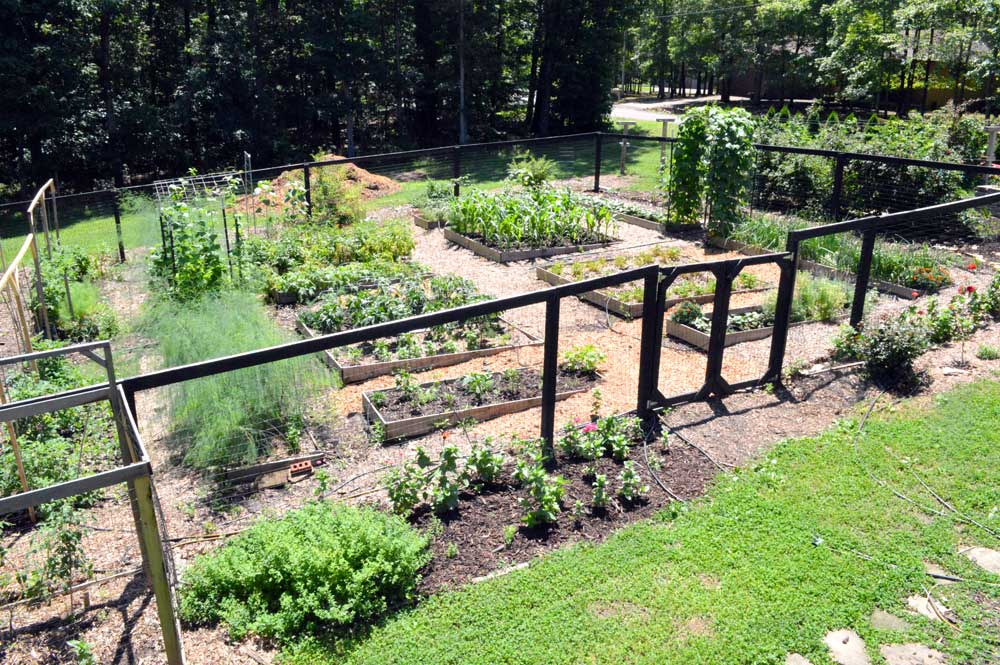
2019 Garden
If you have a choice, make sure your garden gets maximum sunlight. We cut down several trees around our first garden and cleared an entire 1/3 acre of trees for the second garden. For me, it was 100% worth sacrificing the trees for a healthier garden.
Here a few reasons why its good to have full sun. The first reason is full sun dries the leaves of plants quickly, and consequently, there is less time for diseases to spread. Many fungal diseases need moisture on the leaves in order to spread. If there is less moisture on the surface of the leaves, there is less of a chance of it spreading.
The second and most important reason to have full sun is because many common vegetable and fruit plants require it for optimum growth and yield. Here’s an example from my own garden. I planted the exact same squash plants at the exact same time in two different locations. One is in my full sun garden, and the other is in the one that gets 6 hours of sunlight. The full sun location squash is huge and already producing. While the squash in the garden with only 6 hours of light is a little more leggy, smaller, and doesn’t have any flowers on it yet. Sun makes such a big difference!

Winter sunrise
In a year round garden, the angle of the sun in winter also needs to be considered when assessing the amount of sun the garden receives. The angle of the sun becomes lower in the sky casting longer shadows. Areas that may not have been in shade in the summer could become shaded from a structure or trees adjacent to the garden. Allow plenty of space where possible away from areas that could become shaded. Low tunnels, cold frames, and remaining plants will need all the sun they can get through winter.
#2 Water Access
A very important need for any garden is access to water. For most home gardeners, this may just mean that you need to make sure the garden is close to the water spigot on the exterior of your home.
If your water is piped from your city, using water for the garden can get expensive. This is the case in my own garden so I speak from experience 🙂 You may want to use one of the following ways instead to irrigate your garden.
Rain water catchment: Another great option for watering the garden is to utilize rain water catchment if it is allowed in your area.
Well: A third option would be to use a well to irrigate the garden. As a general rule, a well can handle watering the garden as long as it doesn’t exceed an acre in size. Anything larger may run the risk of having the well run dry (this of course can vary based on a number of factors).
Pond, Stream, or River: The ideal situation for a large garden would be to have a spring fed pond, stream, or river that is higher in elevation than the garden that can be tapped into and allow for a gravity fed irrigation system. I got this idea from Eliot Coleman and it does sounds awesome!
If you don’t have this option on your property naturally, it is possible to dig your own water reservoir.
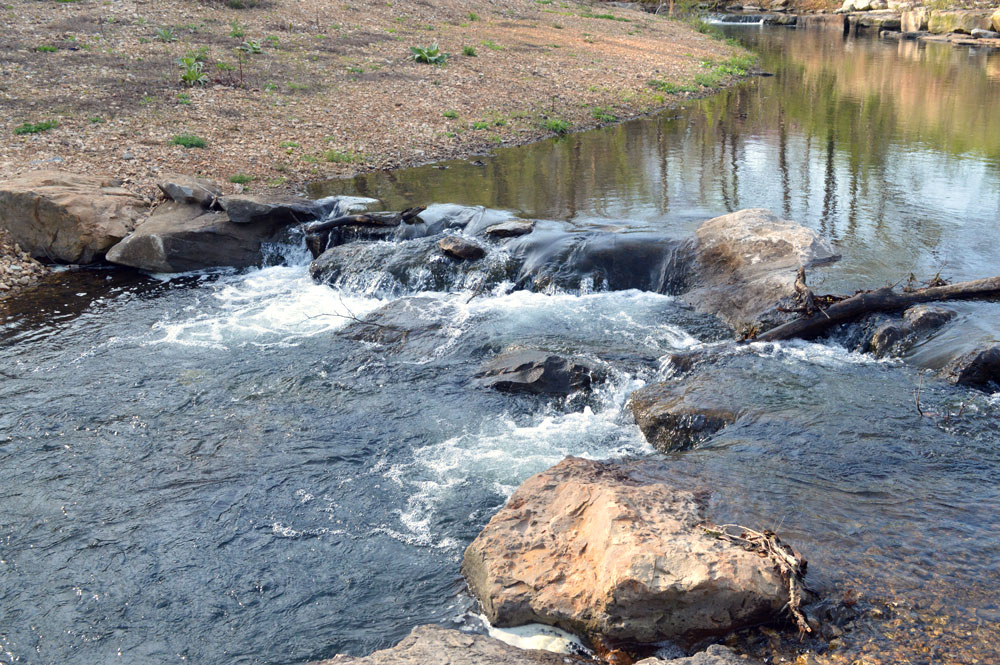
In addition to having water on the property, you want to make sure that you put the garden close to the water source. The further away it is, the more expensive it will be to pipe water out to your garden. I will talk more about irrigation in a future post because this can be tricky with a year round garden.
#3 Drainage
Drainage is important because the roots of most plants don’t like to be in standing water. Plant roots need air to thrive. If there is water in the soil it makes it an anaerobic environment with no oxygen and consequently, the plant would get choked out and die from the lack of air. Poor drainage also increases the likelihood of soil diseases infecting the plants.
I love the advice of Jean Martin Fortier, author of The Market Gardener. He said, “Contrary to what one might imagine, the perfect site for a … garden would not be on flat land, but rather on a gentle and steady south- facing slope with no depressions”
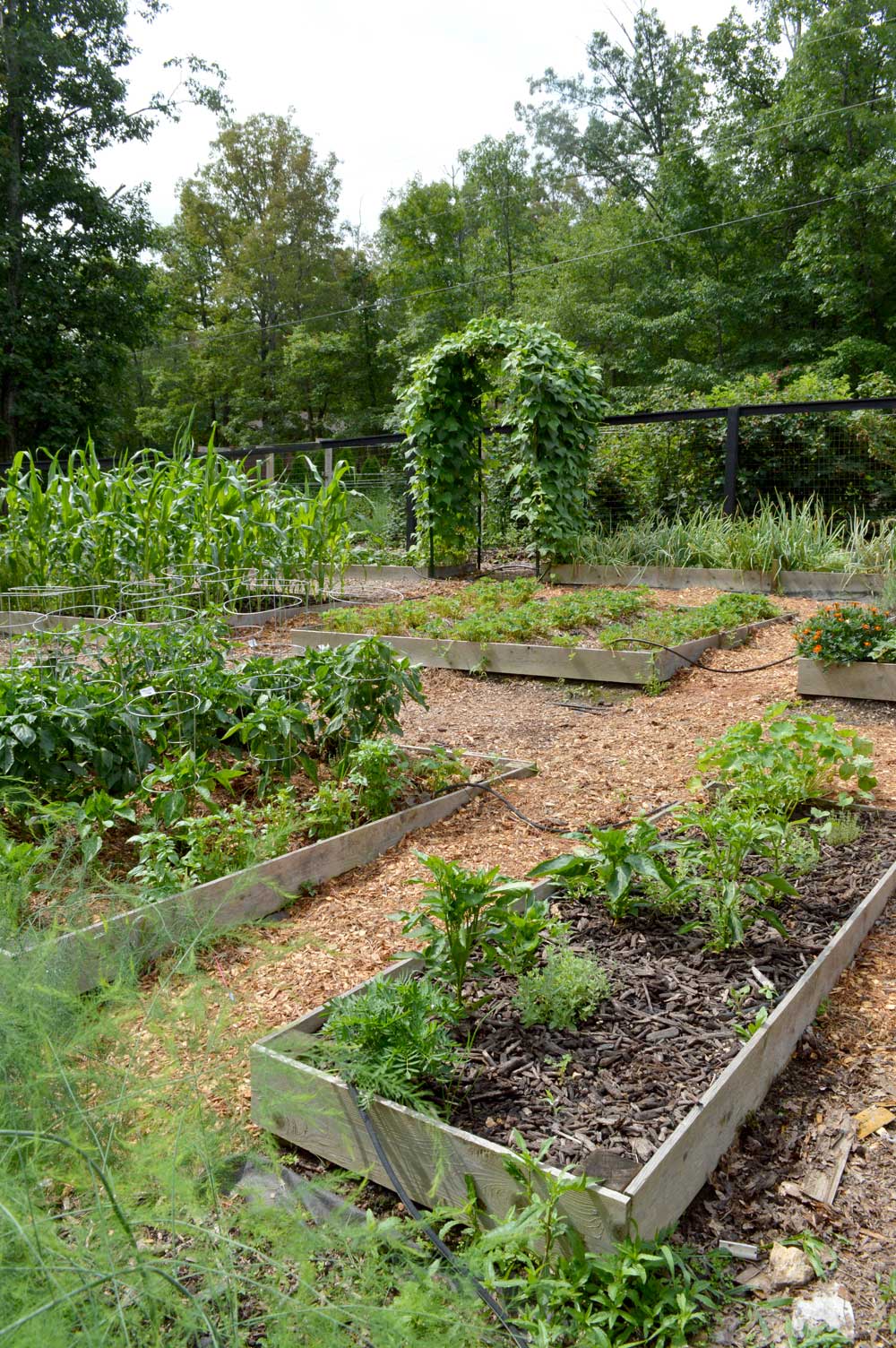
My garden is on a steeper slope, so we put in Terraced Raised Beds.
Perfectly flat land doesn’t allow for the best drainage but a gentle slope of around 5% is ideal. If you have too much of a slope it can cause some erosion of the soil. If erosion happens, it may wash away the nutrients from the plants.
You can see in the photo above, we have a steeper slope. We chose raised beds with wood framing and terraced them to keep the soil from washing away. On the other end of the spectrum if you have very flat land that doesn’t drain well, you can also use raised garden beds as an inexpensive way to remedy the problem.
I’ve been strawberry picking in a field that had water three to six inches deep in most of the walkways after a morning rain. The farmer had utilized raised beds about 18 inches high, making it so the strawberry roots were not sitting in water. Only our feet had to sit in the water as we picked. 🙂
#4 Soil Quality
I debated on putting soil quality on the list because in many cases good soil can be built up at any location. However, because soil quality is so important to a successful garden, it may be worthwhile to find a place with good soil initially and save the time it would take building it up.
Here are some guidelines:
-
Don’t put the garden any place of your yard or land that has used herbicides in the past 3 years.
-
Keep the garden away from any area with chemicals or toxins that may be lingering in the soil.
-
Strive for loamy soil. Loam contains about the same proportions of sand, clay, and silt. It has good water and nutrient retention while also being fluffy and easy to work with. It also allows for good drainage and aeration in the soil. To test if your soil is loam pick up some soil and see if it forms a ball. If it forms a ball that breaks apart easily that is loam.
If you don’t have naturally loam soil, other types of soil like clay and sand can be improved by adding lost of organic matter, like compost, cover crops, and green manure.
#5 Proximity to your home and tool shed.
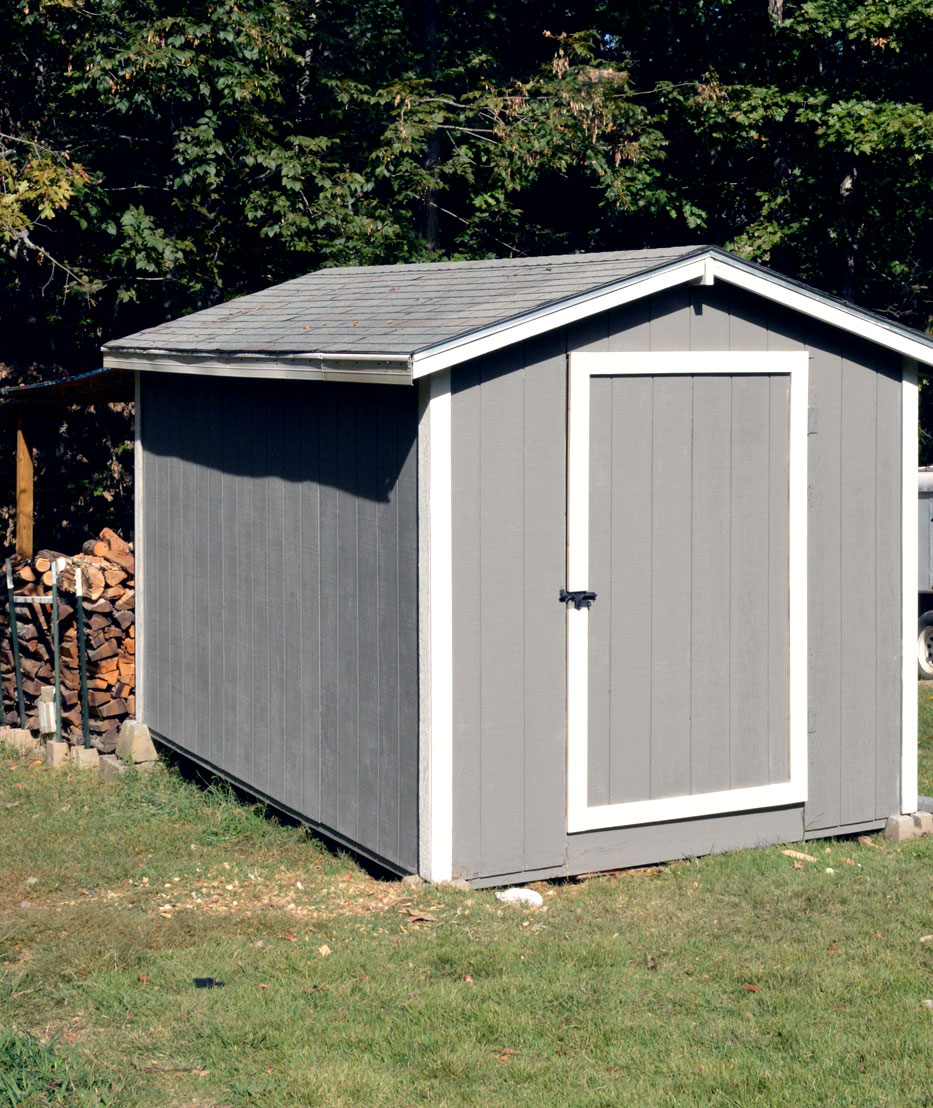
An important consideration on where to put the garden is proximity to your home and the tool shed. While it may seem unnecessary to put the garden close to your home, it can be very useful.
Having the garden close to your home makes it more visible and and easier to access. When you see it all the time, it’s much easier to visit and tend to the garden. The more present you are in the garden the more successful it will be.
Time is also saved having the garden near your home. Keeping the garden a hundred feet closer to the house and tool shed can save hours of walking time over the course of a season. Keep in mind you’ll also be hauling all the produce back to the house too.
All that said, proximity of the garden to the home is #5 on the list. I would put priority on making sure there is enough sun, the water is accessible, good drainage, and quality soil. If you can get all those things close to your home that is an added bonus!!

